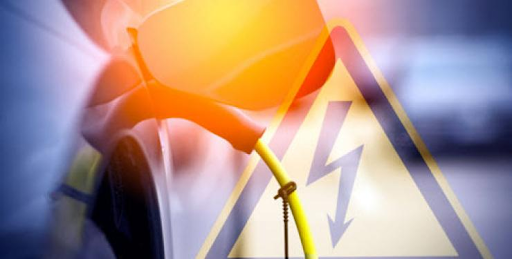Electric vehicles (EVs) are becoming an essential part of modern transportation. With their promise of cleaner energy and reduced emissions, more people are making the switch to EVs. However, these vehicles operate with high-voltage electrical systems, which can be dangerous if not handled properly. Understanding the importance of high voltage EV safety is crucial for every EV owner or user. Safety should always come first, whether you are charging, maintaining, or simply driving your electric vehicle.
Understanding High Voltage in EVs
High voltage EV safety starts with understanding how EVs work. Unlike traditional cars that use gasoline, electric vehicles rely on large batteries and powerful electric motors. These batteries operate at hundreds of volts, far higher than a standard household outlet. While this high voltage enables fast acceleration and long driving ranges, it also carries the risk of serious electric shock or injury if handled incorrectly. Therefore, knowing the basics of your EV’s electrical system is the first step in staying safe.
Charging Safely
One of the most common points where high voltage EV safety becomes critical is during charging. Using the correct charging equipment is essential. Always use chargers recommended by the manufacturer and ensure that cables are not damaged. Avoid charging in wet conditions, as water can increase the risk of electric shock. Even seemingly small mistakes, like touching a damaged cable, can be hazardous. By prioritizing safety while charging, you protect yourself and others around your vehicle.
Maintenance and Repairs
High voltage EV safety is not just about daily use; it is also vital when it comes to maintenance and repairs. Many people might assume that regular mechanics can handle EV repairs, but working with high-voltage systems requires specialized training. Attempting to repair or modify your EV’s battery or electrical system without proper knowledge can lead to serious injuries or permanent damage to the vehicle. Always rely on certified EV technicians who are trained to manage high-voltage systems safely.
Emergency Situations
Knowing how to respond in emergencies is another important aspect of high voltage EV safety. In the event of an accident or fire, EV batteries can behave differently compared to conventional vehicles. First responders and EV owners must understand how to safely disconnect the high-voltage system. Avoid touching the vehicle’s electrical components if you are unsure, and always wait for professionals to handle dangerous situations. Being prepared and informed can prevent accidents from turning into serious injuries.
Daily Driving Precautions
Even during regular driving, paying attention to high voltage EV safety matters. Ensure that the vehicle’s warning lights and safety systems are functioning properly. Avoid tampering with high-voltage components under the hood, and make sure any accessories or modifications are compatible with the vehicle’s electrical system. Simple precautions like these reduce the risk of accidents and help maintain the vehicle’s overall performance.
The Role of Manufacturer Guidelines
Manufacturers include safety guidelines for a reason. High voltage EV safety involves following these instructions carefully. From charging recommendations to storage advice, adhering to these guidelines ensures that you operate your EV within safe limits. Ignoring manufacturer instructions can not only harm the vehicle but also pose a serious risk to your health. Always read the manual thoroughly and follow any safety measures outlined for your specific EV model.
Conclusion
High voltage EV safety should never be an afterthought. From understanding the vehicle’s electrical system to following charging, maintenance, and emergency precautions, safety must be the top priority for every EV owner. By being aware and taking necessary precautions, you can enjoy the benefits of electric vehicles without putting yourself or others at risk. Whether you are a new EV owner or have been driving one for years, prioritizing high voltage EV safety ensures a secure, efficient, and worry-free driving experience.

